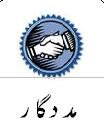 KARACHI, June 11: Karachi has become a major transit point in human trafficking, particularly of women. Given increased airport security, human cargo is being smuggled into the Gulf and further west via the Iran border, Dawn has learnt.
KARACHI, June 11: Karachi has become a major transit point in human trafficking, particularly of women. Given increased airport security, human cargo is being smuggled into the Gulf and further west via the Iran border, Dawn has learnt.The possibility of economic opportunities abroad leads some people into the hands of human traffickers, particularly women who are promised jobs in the child-care, housekeeping or restaurant industries in the United Arab Emirates.
Once there, however, they are often forced into prostitution or virtual slavery to pay off their smuggling debts. Other victims of human trafficking include Burmese and Bangladeshi women lured into marriage under false pretences or sold by their families to agents and then smuggled abroad.
According to Sarim Burney of the Ansar Burney Welfare Trust, human traffickers are using the land route via Mandh Billoh in Iran and sending human cargo as far as Europe. “Indians as well as Pakistani women are being smuggled out of Karachi,” he said, adding that one of the methods used by the traffickers is to pass the women off as their wives.
Mr Burney believes that such large-scale and organised human trafficking is not possible without the involvement of the security agencies, particularly the Federal Investigation Agency (FIA).
The FIA’s complicity is evident from the fact that some time ago, Interior Minister Aftab Ahmed Khan Sherpao told the National Assembly that during the last three years, 27 high- and low-ranking FIA officials have been dismissed or sent on forced retirement on charges of human trafficking. In a written reply to a question posed by an MNA, the minister said that criminal cases had been filed against these officials and heavy penalties had also been imposed.
In February 2005, the FIA established the Anti Trafficking Unit (ATU) to investigate trafficking cases but this has so far failed to deliver the goods. Meanwhile, clear links exist between local and overseas traffickers and politicians, policemen, border security forces’ officials and travel/transport agents.
The majority of the women trafficked internally or abroad are from the Punjab, followed by those from Sindh and the NWFP. Over 70 per cent of them fall into traffickers’ clutches because of poor socio-economic conditions. A large number of the young girls smuggled internally – in close collusion with the local police – are forced into domestic labour or prostitution.
According to Zia Ahmed Awan, president of Lawyers for Human Rights & Legal Aid (LHRLA), such smuggling is taking place on a large scale and only a few incidents reach public attention. Citing a recent case that came up before the Supreme Court, Mr Awan pointed out that the 40 women used to sell flowers in Islamabad and were being trafficked to Gulf countries through Lahore. Stressing the need for laws to curtail the internal trafficking of women and children, which he termed “real human trafficking”, Mr Awan said that FIA arrests usually concerned economic migrants and served as a mere eye-wash.
Meanwhile, some pimps and smugglers deal exclusively in Burmese and Bangladeshi women. They bring women into Pakistan after passing them off as their wives and the victims are then smuggled abroad. In some cases, parents, guardians or husbands sell women to human traffickers, while others are deceived into illegal cross-border migration.
Karachi’s Burmese population is concentrated in Landhi, Korangi, Orangi Town, Surjani Town and some Gulshan-i-Iqbal katchi abadis. Landhi also houses a sizeable Bangladeshi community. According to social worker Habibullah, some of the wealthy leaders of the Burmese community in Landhi and Korangi are human traffickers who bring Burmese and Bangladeshi women into Pakistan to smuggle abroad. “Talib, Habib, Mohammad and Shafiq are among the influential Burmese who have become millionaires by trading women,” he said. “A couple of decades ago, they supported themselves selling fish and cloth.”
Requesting anonymity, a police official told Dawn that some families are aware of their girls’ fate. “The residents of about 35 houses in the Burmese Colony and Landhi’s Shareef Colony are involved in either selling their own girls into prostitution abroad, or keeping other girls for the purpose,” he said. “Depending on age and beauty, the price tag can be as low as 40 grams of gold. The girls are rarely over 20 years old.” He added that Burmese pimps have virtually replaced the Bangladeshis that were earlier active in the trade of Burmese and Bangladeshi women, and representatives of law enforcement agencies regularly exhort money from such individuals.
Traffickers are also active in katachi abadis in other parts of the city, particularly in Ziaul Haq Colony, Jamali Goth and Limoon Goth. Reportedly, amongst the men involved are Mohan, Chunnu, Malik, Yaseen and Anwer. In 2002, Anwer’s mother lodged a complaint with the Gulshan-e-Iqbal Police Station, accusing her son of smuggling women.
However, no action was taken against the accused man, who enjoyed good relations with the police.
According to Anis Haroon, Sindh chief of the Aurat Foundation, Pakistan is a hub for the smuggling of Afghan, Bangladeshi and Sri Lankan women. “The practice could not flourish without the involvement of law enforcement agencies,” she said. “When we visit areas such as Moosa Colony or Bengali Para to interview victims, we are followed by personnel of the area police and asked to state the purpose of our visit.” Ms Haroon pointed out that the threat of police harassment prevents many women from giving information.






No comments:
Post a Comment